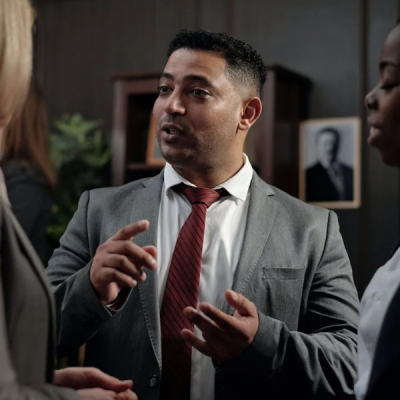The U.S. Department of Labor, Occupational Safety and Health Administration (OSHA) has approximately 2,200 safety inspectors who are responsible for the safety of 130 million American workers. The job of OSHA is a challenging one; with more than eight million places of business and worksites nationally, there is approximately one occupational safety and compliance officer for every 59,000 American workers.
It is not difficult to understand how many workplaces may provide unsafe working conditions, according to Seattle Personal Injury Lawyers, simply because of absent reporting and lack of inspection. Before the OSHA was created over 44 years ago, just under 15,000 workers were killed on the job annually. Today, in terms of workplace fatalities, there are less than 12 per day. Non-fatal injuries however, impact an average of 3.0 million American workers annually, or 3.2 cases per 100 full-time workers, as reported in the 2015 Survey of Occupational Injuries and Illnesses (SOII) and the U.S. Bureau of Labor Statistics.

For workers who are unable to return to their pre-injury occupation due to physical, cognitive, or other limitations, finding a new career path can be frustrating and difficult. We will discuss how to evaluate new opportunities, and where to find resources for retraining and employment.
Step 1: Understanding Physical and Financial Limitations
Some of the hardest hit workers are those who have been gainfully employed (long-term) with employers in the construction, or other high-paid manual labor positions. In many cases, individuals who did not have the opportunity to acquire a college degree earn significant income through skilled trades, including plumbing, electrical, or heavy equipment operation. Pay scale for skilled trade laborers can range from $18 to more than $30 per hour, and experienced electrical and plumbing contractors can earn from $50 to $100 per hour in some regions.
With a severe injury, the worker may not be able to bend, lift, push, pull, or carry heavy objects. They may have new physical impairments that make their previous job not only difficult, but unsafe. The first step in retraining for an alternative career after a workplace injury is to understand the new physical limitations that prohibit the worker from certain jobs.
Step 2: Identifying Transferable Skills
Regardless of your career path or previous work history, every individual has a unique set of transferrable skills that make him or her marketable to employers. If you ask someone about employment skills, many individuals express difficulty identifying them. Some workers mistakenly think that they have a narrow skillset, specific only to the industry and jobs that they have held in the past, and their experience.
Separate from any industry or job title is a core set of abilities that are necessary for a worker to perform certain tasks. There are four basic transferable skills:
- Communication: Speaking, reading, writing, and expressing thoughts and ideas, or providing instruction or guidance to others.
- Critical Thinking and Problem Solving: The ability to analyze a problem or set of obstacles, create a strategic plan to overcome them, and execute decision-making and take action.
- Time and Self-Management: The ability to organize activities to achieve objectives, complete work on time, and be diligent and responsible in assigned duties.
- Interpersonal and Relationship: The ability to listen, understand, accept direction, and provide leadership when required in a supportive manner, and exercise assertive behaviors when appropriate.
An excellent example is a construction worker who may have excellent teamwork, communication skills, and even project management skills acquired on the job site. While lifting and manual labor may not be possible post-injury, the worker still has valuable experience within the construction industry that may be applied as a contract planner, estimator, inspector, or other administrative capacity (after retraining and certification).
Step 3: Consulting a Career Counselor and Personal Injury Lawyer
For many people who are starting a second career because of a workplace injury, there is a sense of emotional loss that they can experience. Working for years in the same industry, there are feelings of comfort and identity tied to our work. Career retraining requires building a new professional identity which can be uncomfortable; it can also be an opportunity to find and create a career you love.
Depending on the eligibility of free or employer sponsored programs, a counselor is an excellent resource to help workers identify potential career paths. Legal counselors can also connect injured workers to government resources, grants, and even volunteer programs that can help the worker gain experience in a new industry, or narrow down different career options. They can refer injured workers to industry mentors, who can provide valuable advice on hiring and requirements.
Step 4: Job Training
Where workplace injuries are legally accountable for the underemployment of a worker, there are state programs that assist with job retraining. This may mean free educational courses or subsidized classes and certifications.
The job retraining process can take time, but with guidance and support, it is a worthwhile endeavor that can help restore your pre-injury income, while providing an occupation that will not exacerbate injuries or health conditions.
Step 5: Employment Search
The good news is that searching for a job has never been easier, as recruiters and opportunities can be browsed online through your smartphone, tablet, or home computer. One of the best places to look for regional job postings is the social networking site LinkedIn. Even if you have never used the site before, brush up your profile (see “How to Create the Ideal LinkedIn Profile” via Forbes Magazine),
It is important to look at a new career as an opportunity to excel in a new direction. Part-time continuing education or evening classes and degree programs can help workers advance in their new careers, and workers may be qualified to receive financial assistance.
Transitioning from a manual labor or skilled technical and trade career, to a more sedentary and potentially lower paying occupation can take some adjustment. However, workers returning to gainful employment after a serious injury should feel a sense of accomplishment – having successfully traversed recovery, treatment, and career change to start a new and rewarding occupation.
Author:
Matt Conner is an associate attorney at Brett McCandlis Brown Law Firm. Matt has undergraduate degree from from Willamette University in Salem in mathematics and economics. Matt likes playing soccer, fishing, skiing and camping.




